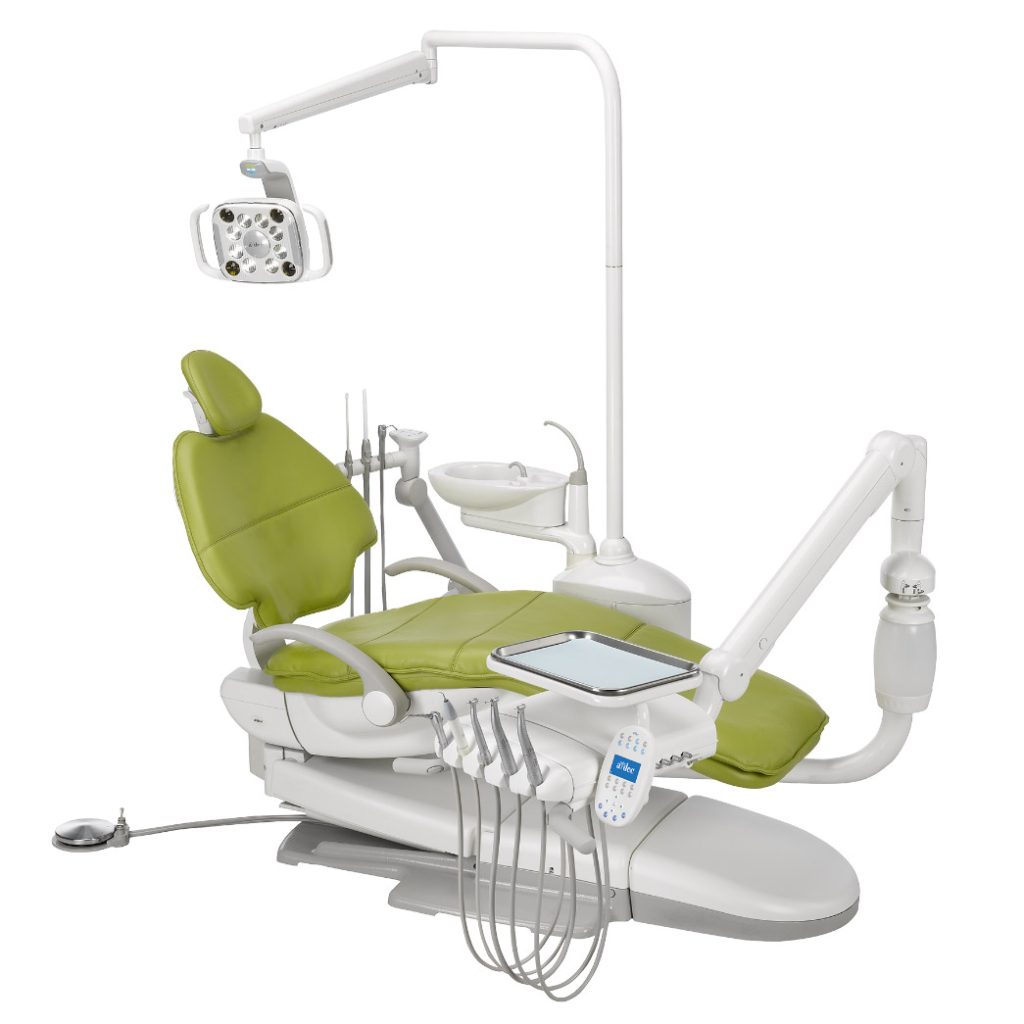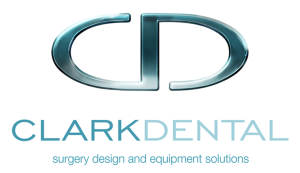A professional pain
Featured Products Promotional FeaturesPosted by: Dental Design 27th March 2023

Dentistry is a largely sedentary profession, meaning that many clinicians may be at risk of musculoskeletal disorders. In a role that depends upon physical capability, musculoskeletal pain can be incredibly demoralising and distressing. The health of the professional is just as important as the health of the patient, and so it is vital that clinicians be mindful of the dangers of musculoskeletal pain and put measures in place to protect their health.
The truth about posture
There has long been a debate on ‘good’ and ‘bad’ posture and their links to musculoskeletal pain. Examples of ‘correct’ posture include sitting upright and standing tall and straight, while ‘poor’ posture is thought to include stooping when standing or slouching when sitting. In certain workplaces, such as an office, it is not unusual to see posters that detail proper posture when at a desk – namely, supporting the back, adjusting the chair/desk height and ensuring the screen is eye level. The same can be said in a workplace where employees must lift objects – positioning the feet correctly and assuming a squat technique when lifting are essential.
Despite the prevalence of corrective posture measures, strong evidence between avoiding poor posture and the prevention of lower back pain (LBP) remains to be firmly established.[i] [ii] Spinal curvatures naturally vary between individuals, and no single spinal curvature has been strongly linked with pain.i We should not ignore the rules for posture entirely, however, but rather rethink and recognise that ‘correct’ posture, while comfortable for some, might not be wholly suitable for others.
In fact, it has been suggested that individuals may be encouraged into using a ‘correct’ posture due to fearful messages postulated by the media,ii messages that reinforce the idea that LBP can be avoided through positioning oneself correctly. For those who have pre-existing LBP, good posture is often suggested as a way to ‘protect’ the spine, however this is challenged by associations made between pain-related fear, avoidance behaviour and a higher risk for chronic LBP in those already affected.[iii] [iv] It may be safe to suggest, then, that ‘good’ posture does not always prevent musculoskeletal pain, in the same way that it is not always caused by ‘bad’ posture.
 The issue in dentistry
The issue in dentistry
In light of this, the phenomenon of musculoskeletal disorders in dental professionals is particularly interesting. Unlike sitting at a desk, or in manual lifting occupations, dentistry requires clinicians to work long hours in often poor lighting and in prolonged static/awkward positions. They also operate and grip vibratory instruments for long periods of time.
Dentistry is a stressful profession, and research[v] has shown that stress could be associated with the presence of musculoskeletal symptoms, a relationship that is likely bidirectional. The same study further noted that exercise may be the ‘main relieving factor’ for musculoskeletal symptoms caused by prolonged sitting in dentists. This challenges an earlier study that suggested good posture is the ‘main relieving factor’ for the same symptoms.[vi] It could be a combination of these factors that are contributing to the prevalence of musculoskeletal disorders in dentists.
One study set out to investigate the occurrence of musculoskeletal disorders in dentistry. Out of the 87 participating dental professionals, 79.8% reported at least one musculoskeletal complaint. This pain occurred in 82.6% of general dentists, 75% of dental specialists, 66.7% of dental assistants and 33.3% of dental technicians. Other research has highlighted that the neck, shoulder and/or back area seem to be the most affected by dental activities,[vii] with LBP being the most common complaint.[viii]
What can you do?
Worryingly, musculoskeletal disorders are one of the most common causes of ill-health retirement in dentists.[ix] Researchers have suggested certain preventative measures that should be introduced to combat musculoskeletal disorders. These include stretching regularly before and after work, taking breaks and avoiding repetitive motions.[x] Professionals could also consider improving their working style, working posture and dental practice designs,[xi] and re-evaluating their equipment, such as their dental chair. xi
A well-designed dental chair will not only provide comfort for the patient, but will allow the dentist to work with minimal pressure on their body. It is always worth investing in a system that offers optimal functions for ultimate comfort. Clark Dental is proud to offer professionals the new A-dec 500 dental chair, a stylish and intelligent system that facilitates the ultimate ergonomic experience. Everything you need is within perfect proximity, and with an effortless, one-handed adjustment, you can position the delivery system to suit your working style. With the deluxe plus touchpad, you can tilt the screen and rotate the arm for a precise viewing from multiple angles. The extended-reach tubing reduces in-procedure resistance and fatigue,* and the integrated, stackable tray holds everything you need, discreetly.
Make a long day a good day
Reassessing your clinical space is only one part of the bigger picture when it comes to preventing musculoskeletal disorders. It is vital that dental professionals continue to prioritise their health to be able to work comfortably and efficiently.
*Available on the A-dec Continental® delivery system

For more information, call Clark Dental on 01268 733 146, email info@clarkdental.co.uk or visit www.clarkdental.co.uk
Stuart Clark: Managing Director
Having grown up within dentistry, Stuart has developed an unparalleled understanding of the industry. He is a technical specialist in digital imaging, pulling on his extensive experience as a Technical Director for Schick Technologies. Stuart is also an expert auto-CAD surgery designer and dental equipment engineer.
[i] Kwon, B.K., Roffey, D.M., Bishop, P.B., Dagenais, S. and Wai, E.K. (2011). Systematic review: occupational physical activity and low back pain. Occupational Medicine, [online] 61(8), pp.541–548. Available at: https://academic.oup.com/occmed/article/61/8/541/1539474 [Accessed 6 Sep. 2022].
[ii] Slater, D., Korakakis, V., O’Sullivan, P., Nolan, D. and O’Sullivan, K. (2019). ‘Sit Up Straight’: Time to Re-evaluate. [online] Journal of Orthopaedic & Sports Physical Therapy. Available at: https://www.jospt.org/doi/10.2519/jospt.2019.0610?url_ver=Z39.88-2003&rfr_id=ori:rid:crossref.org&rfr_dat=cr_pub%20%200pubmed [Accessed 6 Sep. 2022].
[iii] Thomas, J.S. and France, C.R. (2007). The relationship between pain-related fear and lumbar flexion during natural recovery from low back pain. European Spine Journal, [online] 17(1), pp.97–103. Available at: https://www.ncbi.nlm.nih.gov/pmc/articles/PMC2365523/#:~:text=Pain%2Drelated%20fear%20has%20been,acute%20episode%20of%20back%20pain. [Accessed 6 Sep. 2022].
[iv] Dankaerts, W., O’Sullivan, P., Burnett, A., Straker, L., Davey, P. and Gupta, R. (2009). Discriminating Healthy Controls and Two Clinical Subgroups of Nonspecific Chronic Low Back Pain Patients Using Trunk Muscle Activation and Lumbosacral Kinematics of Postures and Movements A Statistical Classification Model. Lippincott. [online] Available at: https://journals.lww.com/spinejournal/Abstract/2009/07010/Discriminating_Healthy_Controls_and_Two_Clinical.16.aspx [Accessed 6 Sep. 2022].
[v] P, P. and L, G. (2016). Prevalence and Associated Factors of Musculoskeletal Disorders among Young Dentists in Indonesia. Malaysian Orthopaedic Journal, [online] 10(2), pp.1–5. Available at: https://www.ncbi.nlm.nih.gov/pmc/articles/PMC5333646/ [Accessed 7 Sep. 2022].
[vi] Patel, H.L., Marwadi, M., Mihir, R. and Patel, P. (2012). PREVALENCE AND ASSOCIATED FACTORS OF BACK PAIN AMONG DENTISTS IN SOUTH GUJARAT. National Journal of Medical Research, [online] 2(02), pp.229–231. Available at: http://njmr.in/index.php/file/article/view/770 [Accessed 7 Sep. 2022].
[vii] Ohlendorf, D., Erbe, C., Hauck, I., Nowak, J., Hermanns, I., Ditchen, D., Ellegast, R. and Groneberg, D.A. (2017). Restricted posture in dentistry – a kinematic analysis of orthodontists. BMC Musculoskeletal Disorders, [online] 18(1). Available at: https://bmcmusculoskeletdisord.biomedcentral.com/articles/10.1186/s12891-017-1629-7 [Accessed 6 Sep. 2022].
[viii] Gasibat, Q. and Aymen, A. (2022). Musculoskeletal Disorders among Dentists: Working Posture Needs to be Improved. The Open Dentistry Journal, [online] 16(1). Available at: https://opendentistryjournal.com/VOLUME/16/ELOCATOR/e187421062204100/FULLTEXT/[Accessed 6 Sep. 2022].
[ix] Brown, J., Burke, F.J.T., Macdonald, E.B., Gilmour, H., Hill, K.B., Morris, A.J., White, D.A., Muirhead, E.K. and Murray, K. (2010). Dental practitioners and ill health retirement: causes, outcomes and re-employment. British Dental Journal, [online] 209(5), pp.E7–E7. Available at: https://www.nature.com/articles/sj.bdj.2010.813#:~:text=The%20mean%20age%20at%20retirement,and%20behavioural%20disorders%20(28%25). [Accessed 7 Sep. 2022].
[x] Gaowgzeh, R.A., Chevidikunnan, M.F., Al Saif, A., El-Gendy, S., Karrouf, G. and Al Senany, S. (2015). Prevalence of and risk factors for low back pain among dentists. Journal of Physical Therapy Science, [online] 27(9), pp.2803–2806. Available at: https://www.ncbi.nlm.nih.gov/pmc/articles/PMC4616098/ [Accessed 7 Sep. 2022].
[xi] www.cochrane.org. (n.d.). Ergonomic interventions to prevent musculoskeletal disorders among dental care practitioners. [online] Available at: https://www.cochrane.org/CD011261/OCCHEALTH_ergonomic-interventions-prevent-musculoskeletal-disorders-among-dental-care-practitioners#:~:text=It%20has%20been%20suggested%20that [Accessed 7 Sep. 2022].








